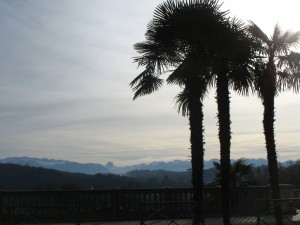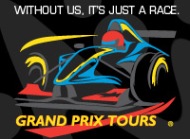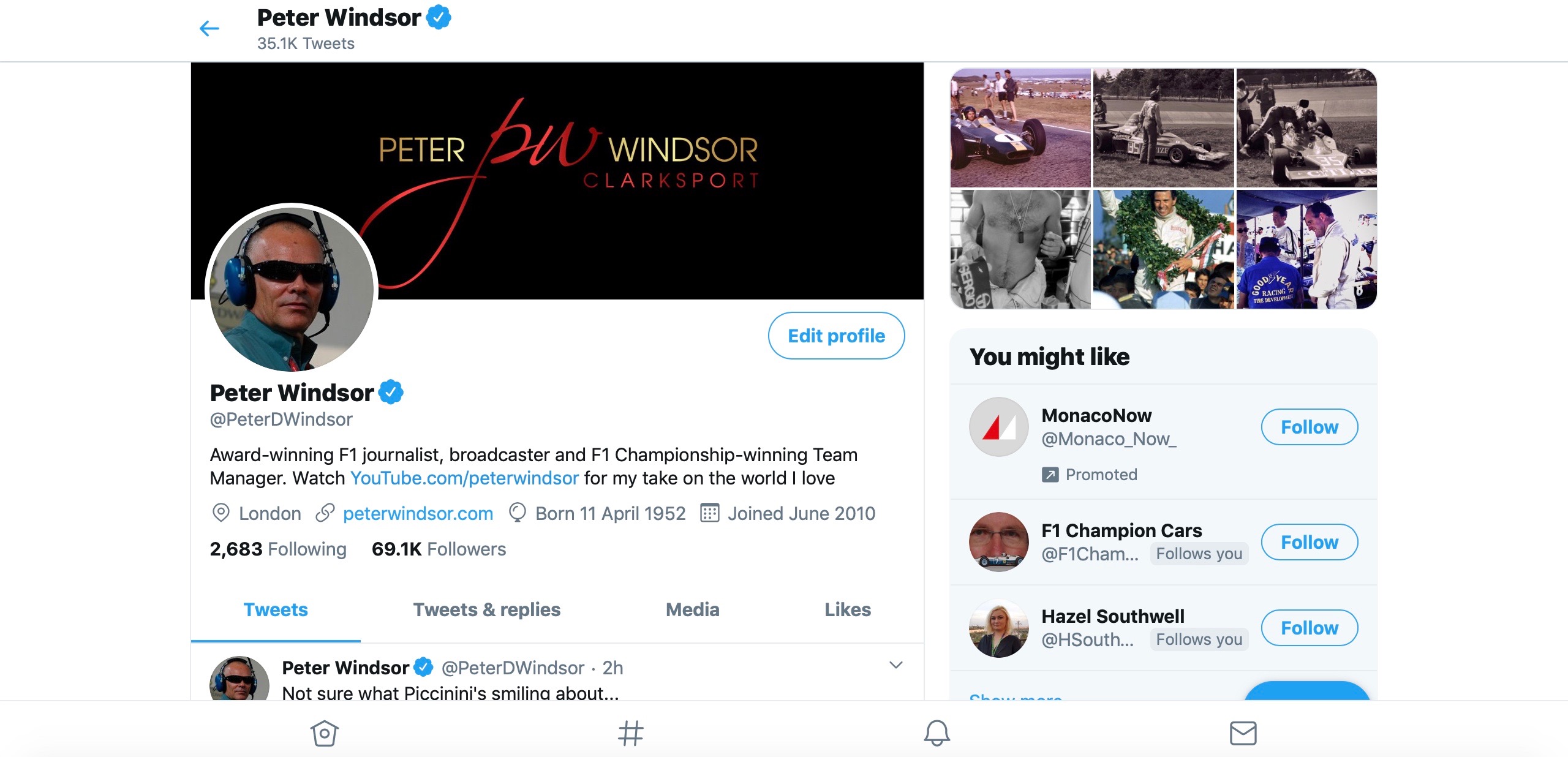The win that Clark tried to share
 And so Jim Clark’s 1963 season begins to gather pace: after a further few days at Edington Mains, Jim set off for his two-week trip to Southern France and then Italy. Ian Scott-Watson drove him in the factory prototype Lotus-Cortina to Edinburgh airport, where Jim flew first to London – in a turbo-prop BEA Vickers Vanguard – and then on to Pau.
And so Jim Clark’s 1963 season begins to gather pace: after a further few days at Edington Mains, Jim set off for his two-week trip to Southern France and then Italy. Ian Scott-Watson drove him in the factory prototype Lotus-Cortina to Edinburgh airport, where Jim flew first to London – in a turbo-prop BEA Vickers Vanguard – and then on to Pau.
The warmer Mediterranean weather was a pleasant change from the rigours of the British winter. There was a carnival atmosphere about the town this second week of April – partly because Pau was hosting an F1 race in its own right, with its own heritage and character; partly because the race would be run on a public holiday – Easter Monday (April 15); and partly because, from the standpoint of Team Lotus, this weekend was effectively a demonstration run. The opposition was negligible, for all the major works teams (bar Ferrari, who were busy on their Michael May-inspired fuel-injected semi-monocoque cars for John Surtees and Willy Mairesse) were racing at Goodwood in the Glover Trophy. Once down near the Pyrenees, though, reality set in: opposition or not, the works Lotus 25s were facing a 100-mile race in demanding track conditions. Even as practice began on Saturday, the public roads began to melt and then to crumble. The weather stayed warm; the crowds expected a speed-fest. As it happened, the track grew slower and slower and increasingly treacherous…
Jim (in the Lotus 25 he had last raced in South Africa, at the end of 1962) nonetheless took an easy pole after two days of practice. Such was the potential danger of the stones, though, that he fixed masking tape over his nose and upper lip for the race. He again wore his trusty Everoak; his Panorama goggles were fitted with dark lenses for his exploits in the golden spring sunshine.
Trevor Taylor, Jim’s team-mate (in the 25 Jim had raced at Snetterton) actually led away from the line but – as great team-mates do – he backed-off before the first, fast right-hander to give the lead to Jim.  Jim responded – then slowed down a little for Trevor. And so it went on. The crowd drank their wine, ate their baguettes, took their naps – but always, when they raised their heads to watch the leaders, there were Jim and Trevor, having fun, swapping places and demonstrating their skill amidst the rubble and the marbles and the frequently-waved yellow flags.
Jim responded – then slowed down a little for Trevor. And so it went on. The crowd drank their wine, ate their baguettes, took their naps – but always, when they raised their heads to watch the leaders, there were Jim and Trevor, having fun, swapping places and demonstrating their skill amidst the rubble and the marbles and the frequently-waved yellow flags.
Who would win? Trevor (right) was happy to cross the line right behind his team-mate. Colin Chapman would be impressed – and Trevor was keen to consolidate his position as a perfect complement to Clark’s genius. They’d raced this way in the Springbok series of 1961 – and Trevor had already scored a strong second place for Team Lotus in the Lotus 24 (1962 Dutch GP). Now, with the 25s heading for more wins in 1963, Trevor wanted solidly to be a part of that. For his part, Jim thought it much fairer to cross the line in a dead-heat finish. Showpiece endings like this weren’t that difficult to organize in the 1960s (timing was down only to a tenth of a second), and even four years later (at Syracuse, in 1967, when the timing was a little more sophisticated) the feat would be pulled off by Ferrari.
On this occasion, though, Trevor dabbed the brakes just before the line, foiling Jim in a neat reversal of what would see years later at Imola, 1982, and Malaysia, 2013: Trevor wanted the win to go to Clark, despite Jim’s best efforts to share it.
As light as the opposition had been, Jim and Trevor were nonetheless exhausted after their torrid day’s work. Over dinner, as plans were made for the drive down to Italy for the following Sunday’s Grand Prix of Imola, a radio crackled out some of the latest hits from England and America – “Big Girls don’t Cry” and the Beatles’ new single, “Please Please Me”. Then, after phone calls back home, they discussed the news of the day: Innes Ireland had won at Goodwood in front of 50,000 spectators in the BRP, from Bruce McLaren in the works Cooper and Tony Maggs’ Parnell Lotus 24 – but not before Graham Hill (’62 BRM) and Jack Brabham (’62 Brabham) had both run into mechanical dramas (fuel and ignition respectively). The Formula Junior race went to Frank Gardner and Denny Hulme (Brabhams), from Richard Attwood’s MRP Lola; Graham Hill made up for his BRM disappointment by winning the Jag 3.8 battle for the St Mary’s Trophy from Roy Salvadori and Mike Salmon; Jack Sears had been quick in the new Ford Cortina GT; Sir John Whitmore and Christabel Carlisle led the Mini division; Graham Hill also won the Sussex Trophy GT race with John Coombs Jag E-Type; and Roy Salvadori won the sports car race – the Lavant Cup – with his Cooper Monaco. Normand Racing had been right up there in the wet, with Tony Hegbourne driving Jim’s Oulton Lotus 23B alongside Mike Beckwith. The pair had eventually finished second and fourth (despite spins!).
Images: LAT Photographic













This series, I hope, will eventually be incorporated into a book, Peter. Wonderful reminiscences!
Another truly great post, thank you Peter!
thanks for a fun read Mr. Windsor. for F1 fans like me that were not old enough to watch this era of gp racing it is a joy to know someone is still interested in retelling some of this rich history. and i second the notion about a book…jp
Pingback: I Always Did Like History Class | AmerF1can